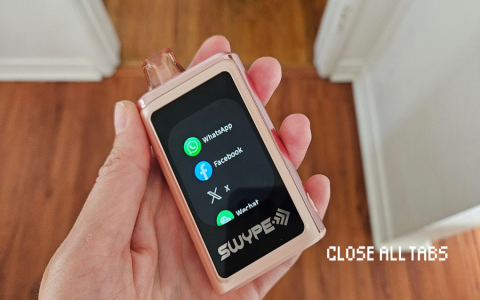Electronic disposable cigarettes, commonly known as disposable vapes, are single-use vaping devices. They come pre-filled with e-liquid and pre-charged, designed for immediate use until the e-liquid is depleted or the battery expires, after which they are discarded.
Operating Mechanism
Disposable e-cigarettes function by an integrated battery powering a heating element, often a coil, within an atomizer. When the user inhales from the mouthpiece (most are draw-activated), the sensor triggers the battery to heat the coil. This action vaporizes the e-liquid stored in a reservoir, producing an aerosol (commonly referred to as vapor) that is then inhaled.

Core Components
- Battery: A pre-charged, non-rechargeable lithium-ion battery providing the power.
- Atomizer: Contains the heating coil and wicking material that absorbs the e-liquid.
- E-liquid Reservoir: A chamber pre-filled with e-liquid, typically containing propylene glycol (PG), vegetable glycerin (VG), flavorings, and nicotine (though nicotine-free options exist).
- Mouthpiece: The integrated part through which the user inhales.
- Casing: The external housing, often made of plastic or metal.
Key Characteristics
- Convenience: Require no prior setup, charging, or refilling, offering immediate use.
- Portability: Generally compact, lightweight, and discreet.
- Fixed Lifespan: Designed for a specific number of puffs (e.g., 500, 1500, 5000 puffs) or until the e-liquid or battery is exhausted.
- Flavor Variety: Available in a wide spectrum of flavors.
- Simplicity: No buttons or complex settings on most models; draw-activation is standard.
Important Considerations
Nicotine Content: Many disposable e-cigarettes contain high concentrations of nicotine, often in the form of nicotine salts, which can lead to rapid nicotine absorption and increased potential for dependence. Users should be aware of the nicotine strength.
Environmental Impact: As single-use electronic devices containing batteries and plastic, improper disposal contributes to electronic waste and environmental concerns. Recycling options are limited in many areas.
Regulatory Landscape: Regulations concerning the sale, marketing, flavors, and nicotine content of disposable e-cigarettes vary significantly across different countries and regions. These regulations are subject to change.
Health Aspects: While potentially posing fewer health risks than combustible cigarettes for existing adult smokers switching completely, disposable e-cigarettes are not risk-free. The long-term health effects of inhaling their aerosol components are still being studied. They are not intended for use by non-smokers, youth, or pregnant women.
Youth Appeal: The wide variety of sweet and fruity flavors, combined with sleek designs and ease of access in some markets, has raised concerns about their appeal and use among underage individuals.









